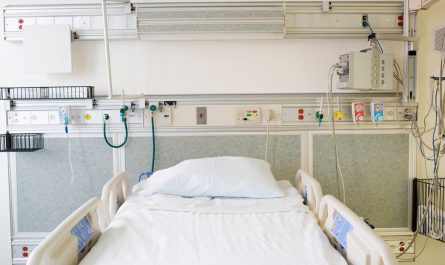
The rising costs of healthcare have put tremendous financial pressure on both patients and providers. One area where costs can be reduced significantly is in medical devices. Every year billions of dollars are spent on single-use medical devices like surgical instruments, endoscopes and other equipment. However, many of these devices are made of durable materials and can safely be reused after proper cleaning, disinfection and sterilization. This process, called reprocessing, allows devices to be used multiple times, lowering overall costs without compromising on quality or safety.
History of Reprocessing
Reprocessing of medical devices is not a new concept. For decades, hospitals around the world have reused devices to reduce expenditures. However, in the late 1980s and early 1990s, as device manufacturers focused on single-use products, reprocessing declined in the United States and other developed nations. Manufacturers argued that single-use is safer as it eliminates reprocessing related risks. But independent research has consistently found that well-regulated reprocessing can be as effective as using brand new devices, provided standardized protocols and rigorous quality controls are followed.
Benefits of Reprocessed Devices
By reusing equipment like endoscopes, arthroscopes and laparoscopic equipment, hospitals can cut costs by 50-80% for each procedure compared to using brand new single-use devices. Reprocessed devices also use fewer resources and produce less biohazard waste. Considering the scale of healthcare spending worldwide, these savings can be substantial. For example, a study by ECRI estimated that if 10% of suitable devices were reprocessed in the U.S., over $300 million could be saved annually. These savings could then be used to expand access to care for more patients or invest in new technologies and treatments.
Quality and Safety Standards
For reprocessed devices to be trusted and adopted widely, it is important that the highest standards of quality and safety are maintained. Device reprocessors must have a robust quality management system in place that follows FDA approved protocols for cleaning, disinfection, functionality testing and sterilization. Only class 1 medical devices that are not implanted and can withstand multiple cleanings should be considered for reprocessing. Clinical studies have found that when standard operating procedures are adhered to rigorously, risk of infection from a properly reprocessed device is extremely low, ranging from 1 in 10,000 to 1 in 1,000,000 uses.
Regulatory Oversight
Currently, reprocessed medical devices come under several FDA and other regulatory guidelines. As with original manufacturers, third-party reprocessors need to register with the FDA, list their devices and adhere to Quality System Regulations. They are also required to validate and document that each step of the reprocessing cycle effectively eliminates any residues or restores the device to its original intended functionality. Several independent accreditation bodies also audit reprocessors and certify them. With stringent regulations and independent inspections already in place, reprocessing is a controlled and validated method to clean and disinfect medical equipment.
Growing Role in Sustainable Healthcare
As environmental sustainability rises up the healthcare agenda, reprocessed devices are increasingly being seen as an important way to build a circular economy model. By effectively recycling and reusing medical-grade stainless steel, plastics and other durable materials from devices, significant amounts of waste can be prevented from reaching landfills. Some estimates show reusable devices reduce as much as 85% of the waste generated from single-use products. As hospitals look to reduce their carbon footprint and fulfill their environmental responsibility, reprocessed equipment provides an attractive value proposition both economically and ecologically.
The Future of Reprocessed Devices
With growing cost pressures on the global healthcare system and a push for sustainability, the role of medical device reprocessing is set to expand in the coming years. More hospitals and healthcare providers are recognizing its clinical and financial advantages. Regulators too have acknowledged that a well-managed and regulated reprocessing sector poses negligible risks to patient safety compared to the considerable waste and costs associated with single-use devices. As standards continue to progress and data demonstrates long-term effectiveness, reprocessed medical equipment is poised to become a mainstream part of the healthcare value chain and help make quality care more affordable and environmentally responsible.
*Note:
1. Source: Coherent Market Insights, Public sources, Desk research
2. We have leveraged AI tools to mine information and compile it


